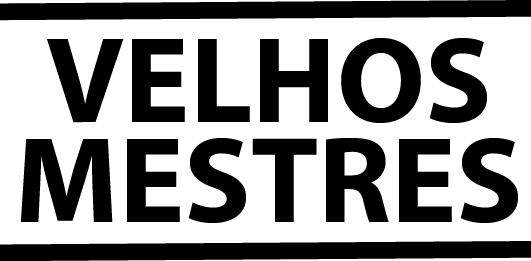CAPOEIRA ANGOLA IN MÁRIO CRAVO'S PLACE
Rio Vermelho, 1955
Garibaldi Street (today Anita Garibali Avenue) 556, Rio Vermelho, Salvador
Anita Garibaldi Av. 556, Rio Vermelho, Salvador
Text and photo gallery
-
Read the text below
-
KICKS: "aú com agulhão", "chibata", "fim de uma ponte".
O Cruzeiro, 10th December 1955
Photo by João Martins
KICKS: "aú com agulhão", "chibata", "fim de uma ponte".
O Cruzeiro, 10th December 1955
Photo by João Martins
KICKS: "aú com agulhão", "chibata", "fim de uma ponte".
O Cruzeiro, 10th December 1955
Photo by João Martins

"RABO DE ARRAIA". Qualquer golpe seria decisivo numa luta a valer.
O Cruzeiro, 10th December 1955
Berimbaus: M Waldemar and ?
Playing: ? and ?Photo by João Martins

Instruments:
? (pandeiro),
? (pandeiro),
M Waldemar (berimbau),
? (berimbau)
Standing: ? (behind M Waldemar) and M Zacarias Boa Morte
Playing: ? and ?
Mário Cravo Júnior's place, Rio Vermelho, Salvador
1955?
Photo by João Martins?
Collection of Joel Alves Bezerra
Capoeira, a danced fight in the "precept" phase.
Sitting:
?,
? (berimbau),
M Waldemar (berimbau),
?,
Squatting: ? and ?
Mário Cravo Júnior's place, Rio Vermelho, Salvador
1955?
Photo by João Martins?
Danças do Brasil (1958) - Felícitas Barreto
Instruments:
? (berimbau),
? (pandeiro),
M Waldemar? (berimbau)
Squatting: ? and ?
Mário Cravo Júnior's place, Rio Vermelho, Salvador
1955?
Photo by João Martins?
Collection of Joel Alves BezerraHomem Mal and M Waldemar
Mário Cravo Júnior's place, Rio Vermelho, Salvador
1955?
Photo by João Martins?
Collection of Joel Alves Bezerra
Instruments: ?
Standing M Waldemar, in the negativa ?
Mário Cravo Júnior's place, Rio Vermelho, Salvador
1955?
Photo by João Martins?
Collection of Joel Alves Bezerra
Lourival aka Homem Mal (mestre's brother) and M Waldemar
Mário Cravo Júnior's place, Rio Vermelho, Salvador
1955?
Photo by João Martins?
Collection of Jonildo Bacelar
[..] Capoeira mestres [Lourival aka Homem Mal (mestre's brother) and M Waldemar] practise their art among the sculptures of Mário Cravo, the Berimbau Player, to the right.
Mário Cravo Júnior's place, Rio Vermelho, Salvador
1955?
Photo by João Martins?
Collection of Jonildo Bacelar
Mário Cravo with his Berimbau Player, in his old house in Rio Vermelho, in Salvador, in 1950-s. Mário Cravo, himself, was a capoeirista and played the berimbau.
Berimbau Player (1951) was made of vinhático-tree, being three metres tall. It was shown on Belvedere da Sé, in Salvador, in 1955. It was a part of the National Hotel collection, in Brasília, until it was auctioned in 2013.
Mário Cravo Júnior's place, Rio Vermelho, Salvador
1955?
Photo by João Martins?
Collection of Jonildo Bacelar
Instruments: ?
Playing: Lourival aka Homem Mal (mestre's brother) and M Waldemar
Mário Cravo Júnior's place, Rio Vermelho, Salvador
1955?
Photo by João Martins?
Collection of Joel Alves Bezerra
Instruments: ?
Playing: ? and M Waldemar
Mário Cravo Júnior's place, Rio Vermelho, Salvador
1955?
Photo by João Martins?
Collection of Joel Alves BezerraPlaying: ? and M Waldemar
Mário Cravo Júnior's place, Rio Vermelho, Salvador
1955?
João Martins's photo?M Waldemar's roda
Mário Cravo Júnior's place, Rio Vermelho, Salvador
1955?
João Martins's photo?M Waldemar's roda
Mário Cravo Júnior's place, Rio Vermelho, Salvador
1955?
João Martins's photo?Playing: Lourival aka Homem Mal (mestre's brother) and M Waldemar
Mário Cravo Júnior's place, Rio Vermelho, Salvador
1955?
João Martins's photo?M Waldemar's roda
Mário Cravo Júnior's place, Rio Vermelho, Salvador
1955?
João Martins's photo?M Waldemar and Homem Mal
Mário Cravo Júnior's place, Rio Vermelho, Salvador
1955?
João Martins's photo?Playing: Homem Mal and M Waldemar
Mário Cravo Júnior's place, Rio Vermelho, Salvador
1955?
João Martins's photo?
M Waldemar's roda
Mário Cravo Júnior's place, Rio Vermelho, Salvador
1955?
João Martins's photo?
M Waldemar's roda
Mário Cravo Júnior's place, Rio Vermelho, Salvador
1955?
João Martins's photo?
Joel Alves Bezerra's collectionHomem Mal and M Waldemar
Mário Cravo Júnior's place, Rio Vermelho, Salvador
1955?
Photo by João Martins?
Collection of Joel Alves BezerraCapoeira de Angola in Mário Cravo's place
The text
-
the page above
-O Cruzeiro, 10th December 1955
"Tamunderê, cumo tá, cumo tá,
Tamunderê, cumo tá vosmicê"CAPOEIRA DE ANGOLA
Text and photos by JOÃO MARTINS
"CAPOEIRA" was brought from Africa to Bahia by the slave negros of Angola. The name of this original fight, where the head and the feet are more used than the hands, has as much as interesing origin as the fight itself. The thing is that this means of defence and attack of the slaves, against whom the colonizers came be inferior, was terminally prohibited. The runaway slaves, however, hid themselves in the forest and there they defended themselves from the persecutors or attacked the travelers. So these elements were baptized "capoeiras", the name which ended up characterizing the fight so to say. Another interesting thing is that the slaves, to practise their sports, camuflaged it with a dance, to the sound of the berimbau, caxixi, reco-reco and pandeiro. And so "capoeira" was passed on from generation to generation to our days, when it's what could be called a true and typical brazilian fight. Moreover a very efficient fight, which should be more circulated, like nowadays is done with jiu-jitsu and boxing. In Bahia are found the greatest mestres of this traditions, like Valdemar, Onça Preta, Reginaldo, etc., besides the famous Mestre Bimba who, however, introduced to "capoeira" freefight and jiu-jitsu kicks, creating what he calls "a bahian regional fight", for which he is critizised and fought for by those who practise the pure and old Angolan fight.



